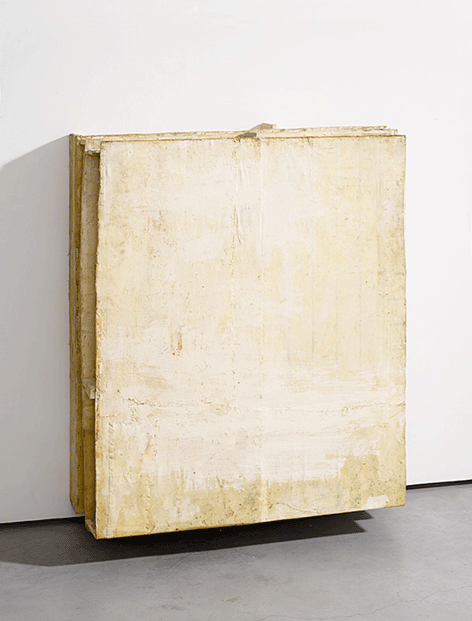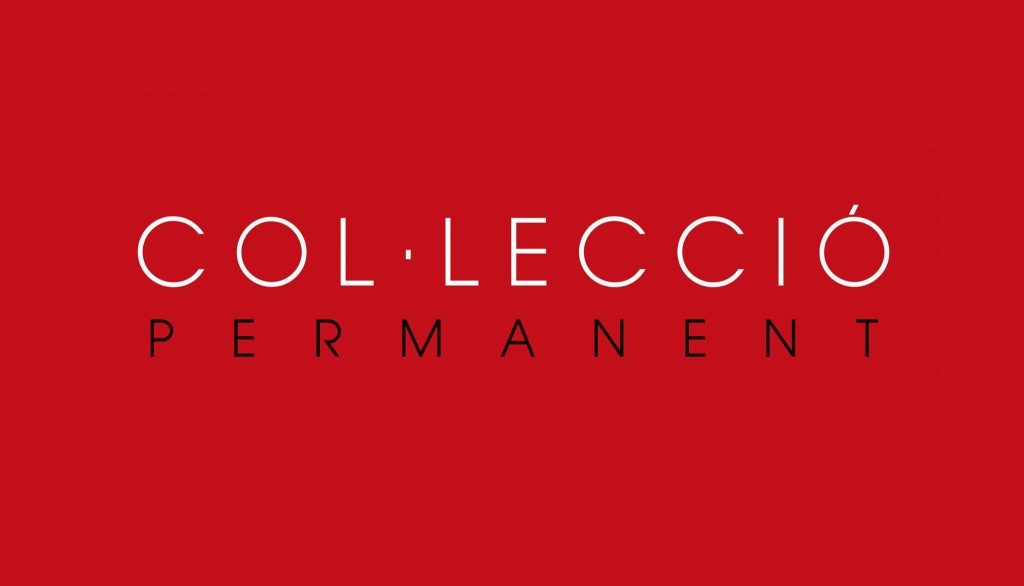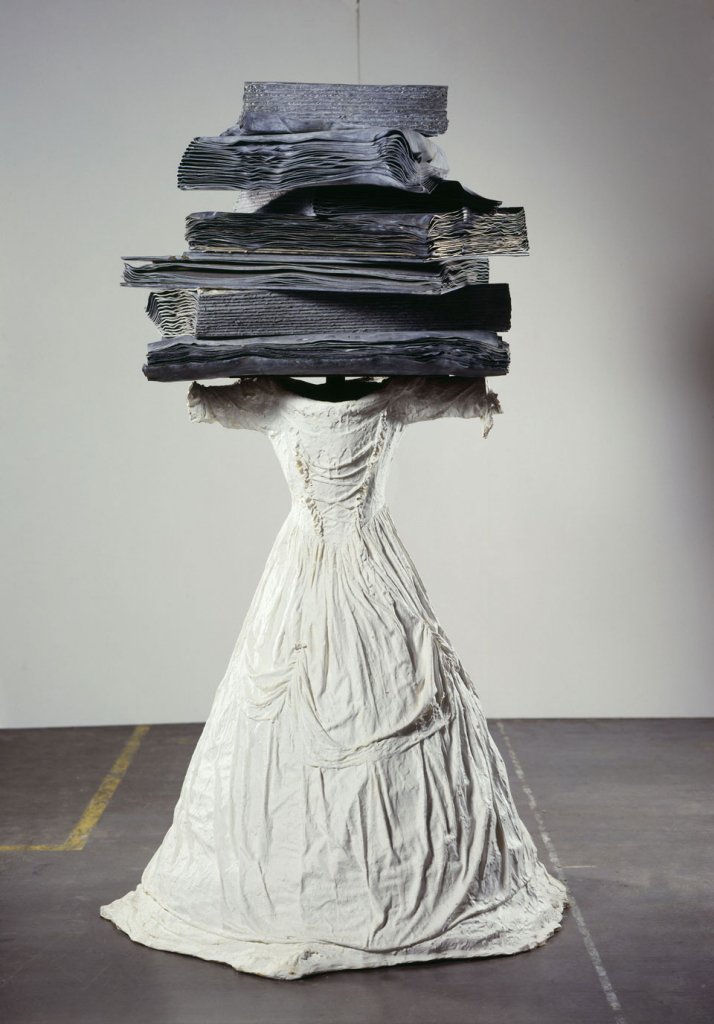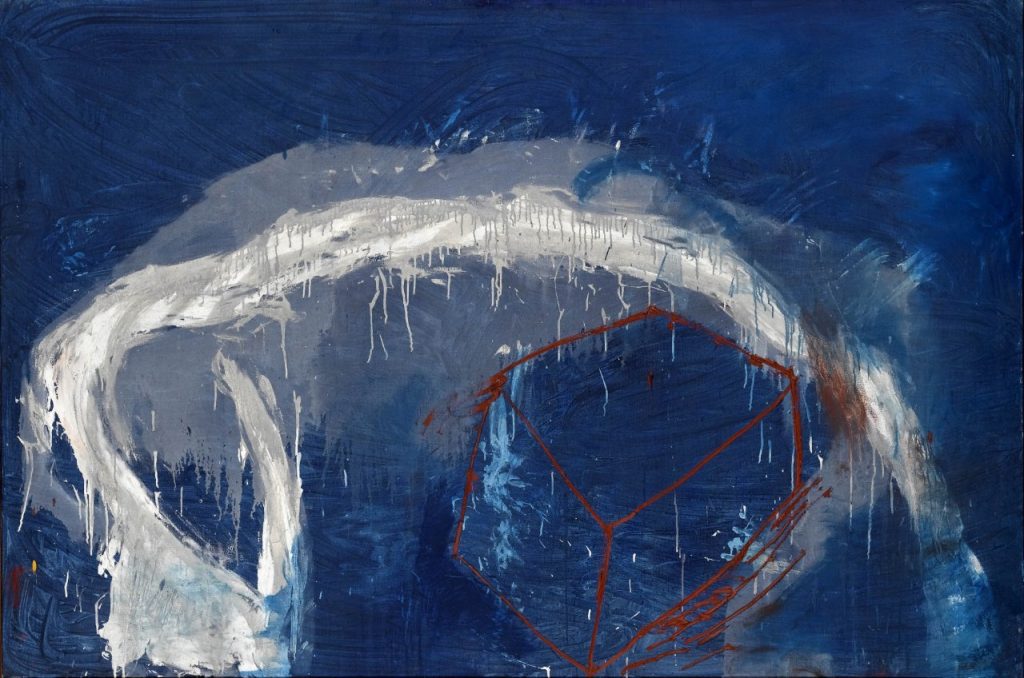
- Artist:
- Lawrence Carroll
- Date:
- 1998-2002
- Technique:
- Mixed technique on canvas and wood
- Dimensions:
- 153 x 129 x 46 cm
- Origin:
- Es Baluard Museu d'Art Contemporani de Palma
- Registration number:
- 595
- Exposed:
- No
Lawrence Carroll develops a language that brings a new dimension to painting, the result of integrating a practice that was habitual in his years as an art student when, due to scarcity of economic resources, he made his own wooden frames, which he recycled, using his canvases on both sides and repainting them several times, or sewing them together using different pieces of fabric. This experience working with materials that were irregular in terms of both length and width and/or thickness helped him to see his works from a different perspective, with the possibility of turning the bi-dimensionality inherent in painting into the tri-dimensionality that objects have. Thus, in the middle of the 1980s, he began creating works in the form of small white cubes which would be the starting point for his artistic evolution.
It’s a long wait is a characteristic work by this artist. The explicit title refers to his interest in the passage of time, and above all to the idea of the complexity of human experience which runs through all his work and reinforces the worn, “world-weary” appearance of his pieces. A work with a surface that has been painted on and repainted with several layers, with coats that show us different stories, on three imperfect planes of wood that has been recycled after fulfilling other functions; with the canvas stitched together in several places, indicating rupture and recommencement. This surface of the canvas, which is also imperfect, contains a huge burden of poetics, mystery, memory and recollections. Neither aggressive nor striking, almost monochromatic upon first glance, but full of nuances, of ochres, whites and yellows.
In Carroll’s oeuvre, the ordinary takes on a special meaning, in that it joins human experience and memory. He works using different techniques that allow him to give the painting a near-sculptural character, even though it is still a painting. Cuts, the re-utilisation of canvases or the inserting of one painting inside another provides a multiplicity of perspective.
C. J.
In 1984, he settled in New York, where he found the ideal place for developing a new personal language that brings a novel dimension to painting. The imperfect surface of his canvases, which are monochrome at first sight, contains a highly poetic charge related to memory and memories. Carroll works with several techniques that allow him to give his painting an almost sculptural look: slashes, the reuse of canvases from other works and everyday objects or ones that reference his personal life, the insertion of one painting within another and the application of light are just some of the techniques that provide the multiplicity of perspectives needed to fulfil his vision. In 1992, Carroll took part in Documenta in Kassel. His work has been on display at the Guggenheim Museum SoHo in New York (1995), the Museo Cantonale d’Arte in Lugano (1997), the Museo d’Arte Contemporanea Villa Croce di Genova (2005), and the Museo Correr in Venice (2008), among others.
E.B.




